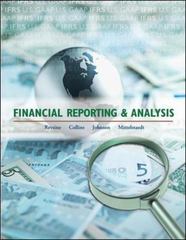Question
Case Study: Import quotas on Japanese cars In 1980 the United Auto Workers (UAW) and Ford Motor Company petitioned the International Trade Commission (ITC) to
Case Study: Import quotas on Japanese cars In 1980 the United Auto Workers (UAW) and Ford Motor Company petitioned the International Trade Commission (ITC) to recommend relief from import competition; during the first half of that year foreign car companies shipped 1.2 million passenger cars to the United States, an increase of 21 per cent over the previous year. The foreign share of the US new car market increased from 17 per cent to 25 per cent in that period. US car manufacturers and workers faced big problems. American Motors sold out to Renault, Chrysler made huge losses and was forced to sell most of its foreign subsidiaries, Ford made even larger losses and General Motors had to borrow large sums to keep afloat. By the end of 1980 193,000 out of 750,000 members of the UAW were unemployed. The ITC rejected the appeal, saying that the problems of the motor industry were due to a shift in demand to small, fuel-efficient cars caused by higher petrol prices,
Course Title :Intro to Managerial EconomicsCourse Code : MGT-473 Discipline /Program : BBA 4th (A,B,C) Total Marks :30 Time Allowed :48 Hours Instructor's Name: Mr. Abdul Majid Khan
and that the industry had failed to anticipate this. The reason for the US consumers' preference for Japanese cars was debatable. One theory, along the lines of the ITC position, was that imports were perceived as having better fuel economy, engineering and durability. This was supported by a survey of 10,000 US households carried out by the Motor and Equipment Manufacturers Association. Supporters of this theory felt that imports should not be limited.However, another theory was that price differences created by labor cost differences were the cause. The Bureau of Labor Statistics estimated that average Japanese car workers' wages and benefits in the first half of 1979 were only half those of US car workers. Those supporting this theory largely favoured taxing imports in order to raise their prices The arguments for protecting or aiding the US motor industry were based on two main premises. The first was that the costs of unemployment were higher than the increased costs to consumers of limiting imports, and the second was that the US manufacturers could recover and become fully competitive with imports if they were given temporary help. The first issue involved an estimation of the hardships of being unemployed, the adverse effect of their lost purchasing power on other industries, and the higher taxes necessary to support the unemployed. A New York Times poll5 showed that 71 per cent of Americans felt that it was more important to protect jobs than to get cheaper foreign products. The second issue related to the past performance of US manufacturers, the possibility of achieving economies of scale and higher productivity with new plants. Ford, for example, estimated that the conversion of its Dearborn engine plant would cost $650 million but would increase productivity by 25 per cent. Those who rejected the idea of protection, like the ITC, blamed the managers of the US companies for their bad decisions. They claimed that these managers and firms should not be rewarded at the expense of the consumer and taxpayer, who would not only face higher prices and taxes, but also suffer from limited choice. Retaliation from foreign countries was another problem that they said might ensue from any kind of protection. The UAW was mostly concerned about maintaining jobs rather than protecting the profits of the manufacturers. They thus pushed for foreign manufacturers to produce in the United States and to have 75 per cent of their parts produced in the US. This was against the interests of the manufacturers, who were trying to produce cars globally by buying parts in many different countries wherever they could be bought cheapest. The Ford Escort for example, which was assembled in the United States, Britain and Germany, contained parts from nine countries. The UAW gathered much public support and, with opposition from consumers being largely unorganized, was successful in 1981 in obtaining a 'voluntary' agreement with Japan to limit car exports to the United States to 1.68 million units a year for three years. Japanese producers and politicians entered the agreement fearing that lack of cooperation could result in even stricter limits. When the agreement expired, Japan continued to limit exports, but by that time the major manufacturers like Honda, Toyota and Nissan already had plants in the United States and sales from these soon outnumbered imports. The effects of the import quotas are also controversial. The US car industry did recover, but some of this was due to the economy moving out of recession. US consumers switched back to consuming more expensive and profitable cars, but this was partly an effect of the import restrictions, which gave US consumers little choice except to buy more expensive cars. The limits on Japanese imports were in quantity not in value; therefore Japanese firms redesigned their cars to make them more luxurious and expensive. During the three years of the original export agreement, the average Japanese import increased
by $2,600; a Wharton Econometrics study attributed $1,000 of this to the import limits. In the same period the prices of US-made cars increased by 40 per cent.
Step by Step Solution
There are 3 Steps involved in it
Step: 1

Get Instant Access to Expert-Tailored Solutions
See step-by-step solutions with expert insights and AI powered tools for academic success
Step: 2

Step: 3

Ace Your Homework with AI
Get the answers you need in no time with our AI-driven, step-by-step assistance
Get Started


